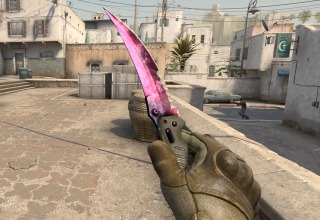Non-Fungible Tokens made their debut in the scene of emerging technologies in 2017, but it was only with the $69-million sale of a Beeple artwork in 2021 that they gained worldwide attention.
So far, NFTs have been mainly transforming the digital art industry, allowing creators to protect their copyrights and intellectual property rights. However, as a technology still in its very early days, much is yet to be understood about its true and full potential.
Nonetheless, one thing is for sure: NFTs are changing product ownership and authenticity as we know it today. For companies looking to secure their products through each step of the supply chain, NFTs can represent the key to an efficient and bulletproof end-to-end product authentication strategy.
Learn about the impact of NFTs on product authentication and ownership in this guide – or visit https://authena.io/security-seals/ to learn more about new use cases for NFTs.
What Is an NFT?
NFT stands for Non-Fungible Token. At their core, NFTs are a string of letters and numbers or a piece of code that acts as the digital representation of a physical asset. The original aim of NFTs was to enable the exchange of two or more items with unique, non-interchangeable values.
When these digital or physical assets with an attached NFT are exchanged, bought, or sold, each transaction is recorded and stored on the Ethereum blockchain. In turn, these records are easily traceable, immutable, and impossible to tamper with.
Today, NFTs are primarily used to represent the ownership of an asset and to enable certain crypto transactions. However, new use cases are found every day in industries like product authentication, membership exclusivity, and digital identity verification.
The Features that Make NFTs Unique
When it comes down to understanding the full potential of NFTs for product ownership and authentication, it is essential to review the characteristics that make them unique. These include:
- Unparalleled transparency and traceability of transactions recorded on the blockchain
- The standardization of protocols, which make NFT exchangeable on several different platforms
- NFTs can be traded openly and in a free market
- NFTs are liquid assets, meaning that they can be immediately sold for cash
- NFT transactions are immutable and impossible to tamper with (source)
Understanding the Case of NFT for Product Ownership
While NFTs can be bought and sold on free marketplaces, owning an NFT isn’t exactly the same as owning the underlying asset they are associated with. For example, buying an NFT linked to an art piece will not grant the NFT buyer automatic rights to the art piece itself.
When purchasing an NFT, buyers should conduct the necessary due diligence to understand the terms of their purchase contract, says MakeUseOf. While the seller might transfer ownership of the physical asset or intellectual property rights, this should not be given for granted.
The Smart Contract encoded with the NFT will be a binding contract that determines the rights the new owner is acquiring when buying an NFT. The best technology to authenticate and bind tangible products with digital NFT ownership is Authena M3TATM, the solution that authenticates the bridge between metaverse and physical world.
Using NFT for Product Authentication: NFT Authenticity Seals
While using NFTs for product ownership comes with nuances that might not be so straightforward to understand from a legal standpoint, the benefits of NFTs for product authentication are much more straightforward.
NFTs are used to create a digital twin of a product and are embedded in a smart label. When the product travels through the supply chain, and the smart label is scanned via enabled devices, a trail of transactions is created on the blockchain.
This immutable and authentic information can then be accessed by both the manufacturer and the end user, who can verify the authenticity claim made by the brand itself.
These authenticity labels allow brands to protect themselves from the threat of counterfeit and fraudulent activity and enable consumers to make better-informed choices about their purchases.
You can learn more about the benefits of using NFTs as part of your product authentication strategy by visiting this link: https://authena.io/security-seals/.
The Benefits of Using NFTs for Product Authentication
At their core, NFTs are immutable certificates used to validate the authenticity and ownership of a product. But what truly makes these strings of code so innovative is the fact that their work is on a blockchain-based technology, gaining its benefits.
Some of the advantages of using NFTs as product authentication tools include:
- Blockchain environments are created to prevent data loss
- Blockchain systems are decentralized
- Thanks to a peer-to-peer security protocol, transactions cannot be easily altered without the blockchain users’ consent
- Blockchain transactions are immediately traceable and accessible
Partnering With a Product Authentication Expert to Implement NFT Authenticity Seals
Implementing NFT technologies into your product authentication system is fairly straightforward, especially when partnering with a specialist who can better understand the needs of your company and its supply chain. What’s more, a product authentication expert can help you skip the pitfalls of implementing a new system by delivering an end-to-end, turn-key system that requires minimal training.
Last Updated: February 9, 2024





















